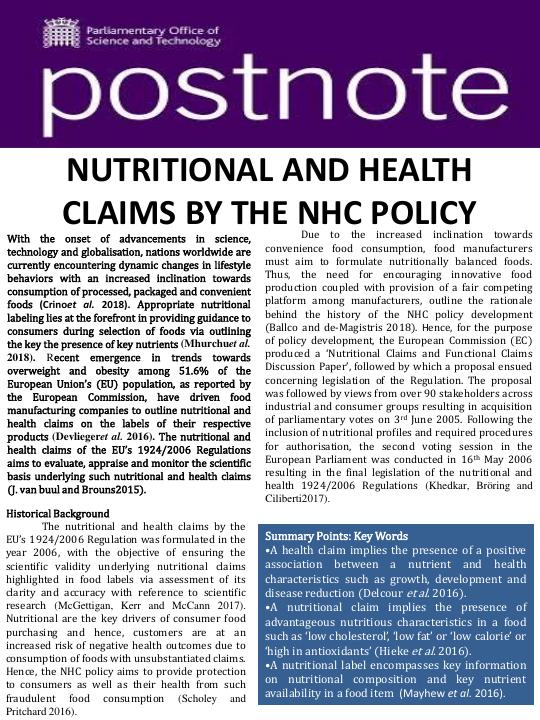Nutritional and Health Claims by the NHC Policy
Write a briefing document (POSTnote) to Members of Parliament, informing them on the current EU NHC regulation. The briefing document should include information on the historical background to NHC, the regulation, types of claims, the process of submitting an application and the evaluation of evidence.
5 Pages2593 Words242 Views
Added on 2023-04-23
About This Document
The NHC policy aims to provide guidance to consumers during selection of foods via outlining the key the presence of key nutrients. The nutritional and health claims of the EU’s 1924/2006 Regulations aims to evaluate, appraise and monitor the scientific basis underlying such nutritional and health claims.
Nutritional and Health Claims by the NHC Policy
Write a briefing document (POSTnote) to Members of Parliament, informing them on the current EU NHC regulation. The briefing document should include information on the historical background to NHC, the regulation, types of claims, the process of submitting an application and the evaluation of evidence.
Added on 2023-04-23
ShareRelated Documents
End of preview
Want to access all the pages? Upload your documents or become a member.
Non-Nutritive Sweeteners: Stevia
|11
|1908
|273
Publication of Research | Conflicts in Research Publication
|6
|2097
|15


